Tips for Grooming a Dog at Home: A Complete Guide
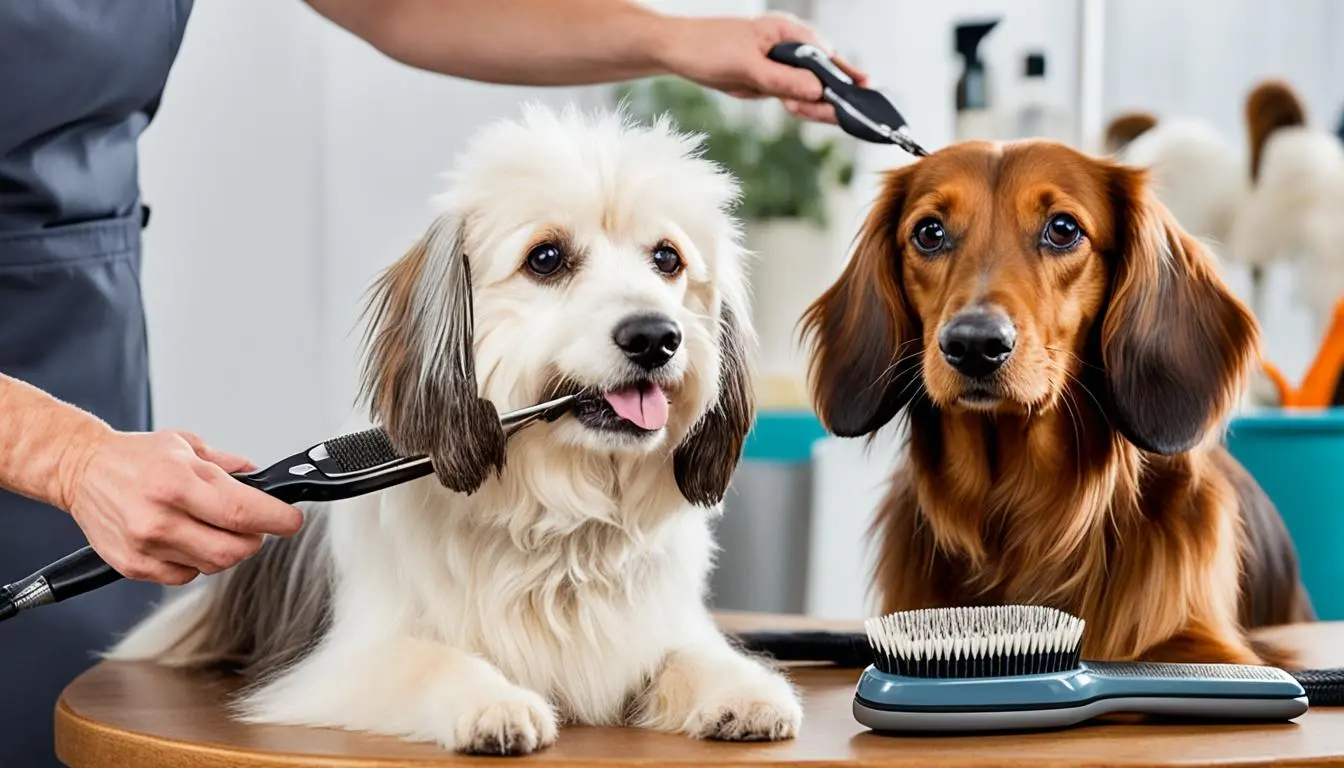
Grooming your dog regularly is not just good for their appearance, it’s also good for their health and happiness. It is easier to detect early signs of skin problems, lumps, or fleas when your dog is groomed. It’s a great way to keep your pet feeling healthy and looking their finest.
Care for your dog also strengthens your relationship with him. It is considered a challenging job by many people. The truth is, anyone can learn how to care for a dog at home with the right tools and guidance.
This helpful guide will walk you through all the tips for grooming a dog at home, from brushing teeth and trimming nails to cleaning ears. Each part is explained in simple steps so you can confidently care for your furry friend without stress.
The importance of grooming your dog at home
Grooming your dog at home is super helpful for many reasons. First, it keeps their coat clean and free of mats, which can hurt your dog. It also spreads natural oils through their fur, keeping their skin healthy and shiny. When you groom your dog regularly, you check their body closely. You may notice minor cuts, rashes, or bumps early on, which can prevent more serious health problems. Additionally, regular grooming sessions are an excellent way to spend quality time with your dog, making them feel loved and secure. These tips for grooming a dog at home focus on care and connection.
Getting the right grooming tools is the first step
Before starting any grooming session, ensure you have all the necessary tools ready. This saves you time and keeps your dog calm because you won’t leave them in an unfamiliar environment searching for items. Everything needs to be readily available to make the process as smooth and efficient as possible. These items and tips will help you groom your dog at home:
-
Brushes and Combs: You will likely need different types depending on your dog’s coat.
-
Slicker Brush: Easily removes loose fur and tangles from most coats.
-
Pin Brush: Detangling long-haired or curly-haired dogs is easy with this brush.
-
Bristle Brush: This brush smooths the coat and removes loose hair from short-haired dogs.
-
Undercoat Rake: Designed to remove dead hair from dogs with thick undercoats (such as Huskies and Golden Retrievers).
-
Metal Comb: Excellent for combing facial hair and checking for tangles after brushing.
-
-
Dog Shampoo and Conditioner: Always use dog products. Human shampoos can harm their skin.
-
Towels: Have several clean, absorbent towels ready for drying.
-
Nail Clippers or Grinder: Choose the option that makes you feel comfortable. Guillotine or scissor-style clippers are common. Grinders (like a Dremel) are used to slowly file the nail down.
-
Styptic Powder or Cornstarch: This is a must-have! If you accidentally cut a nail too short and it bleeds, this powder will stop it quickly.
-
Ear Cleaner (Dog-specific): Use a vet-approved cleaner to gently clean your dog’s ears.
-
Cotton Balls or Gauze Pads: For applying ear cleaner and cleaning ears.
-
Eye Wipes or Soft Cloth: For gently cleaning around your dog’s eyes.
-
Dog Toothbrush and Toothpaste: Never use human toothpaste. Dog toothpaste comes in flavors dogs love.
-
Treats: Keep plenty of your dog’s favorite treats nearby for rewards and positive reinforcement.
-
Grooming Table (Optional): A raised grooming table can save your back and keep your dog contained. If you don’t have one, any stable, raised surface (like a sturdy table covered with a non-slip mat) can work.
Setting Up Your Grooming Area
It is important that you find a comfortable place for you and your dog to relax. It may be a good idea to use a bathroom, laundry room, or even an outdoor space if the weather is warm. The surface should be non-slippery when bathing your dog, especially when it is wet. It prevents your dog from slipping and falling when he is on a non-slip mat. The grooming process will be more effective if you keep the area free of distractions.
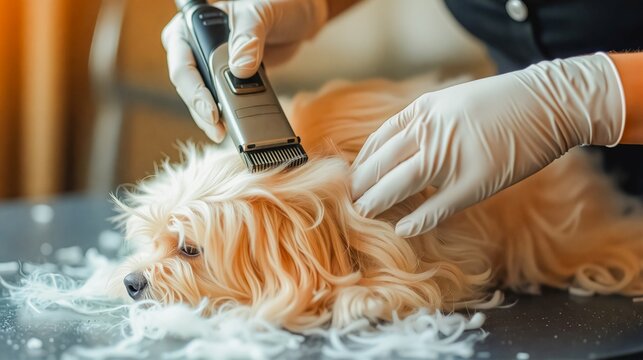
Brush Your Dog: The Foundation of Grooming
Brushing is the most essential part of any dog grooming tips at any dog grooming tips at home. It removes loose hair and dirt while preventing mats. One of the key tips for grooming a dog at home is choosing the right brush based on your dog’s coat type.
-
Start with Short Sessions: Tips for grooming a dog at home suggest starting with short, positive brushing sessions and rewarding your dog with treats.
-
Brush Before Bathing: Tips for grooming a dog at home recommend brushing your dog thoroughly before bathing, as water can tighten mats and make them more difficult to remove.
-
Choose the Right Brush: Short-haired dogs (like Beagles and Pugs) require a bristle brush or grooming glove to remove loose hair and keep their coat shiny. Brush in the direction of hair growth.
-
Medium-haired dogs (like Labs and German Shepherds): A slick brush works well for removing loose undercoats. Use a de-shedding tool during the shedding season.
-
Long-haired or curly-haired dogs (such as Golden Retrievers and Poodles): Start with a pin brush or wide-tooth comb to gently untangle larger knots. THEN, USE A SLICHER BRAND FOR A THOROUGH JOB. Always brush small sections at a time.
-
Dogs with dense undercoats (such as Huskies and Malamutes): An undercoat rake is essential for removing dead undercoat hair, preventing matting, and keeping them cool.
-
-
Brush in Sections: Divide your dog’s body into sections, including the back, sides, chest, legs, tail, and belly. Work on one section at a time.
-
Be gentle with tangles: If you encounter a tangle, avoid pulling. Use a detangling spray or a small amount of a conditioner. Gently work the tangle out with your fingers or the wide teeth of a comb. Start at the ends and working your way up to the skin.
-
Check All Over: Tips for grooming a dog at home remind you not to forget hard-to-reach areas, such as behind the ears, armpits, and belly. These spots are essential tips for grooming a dog at home because they often hide on mats.
Bathing Your Dog: Keeping Them Clean
Bathing is crucial to grooming a dog at home. It helps remove dirt and keeps their skin healthy.
-
Pre-Bath Brush: Brush your dog before wetting them. This prevents the mats from tightening up.
-
Gather Supplies: Have dog shampoo, conditioner, towels, cotton balls (for ears), and a non-slip mat ready.
-
Water temperature: Use lukewarm water. Test it with your elbow to make sure it’s not too hot or too cold.
-
Protect Ears and Eyes: Place cotton balls gently in your dog’s ears to prevent water from entering. Be very careful to avoid shampoo or water in their eyes.
-
Wet thoroughly: Use a handheld sprayer or a cup to wet your dog’s entire coat. Start at the neck and work your way down.
-
Apply shampoo: Lather a small amount of dog shampoo in your hands and gently massage it into your dog’s fur, working it down to the skin. Work from neck to tail, paying attention to dirty areas like the paws and belly.
-
Rinse completely: This is very critical. Rinse your dog’s coat until all shampoo traces are gone and the water runs clear. Leftover shampoo can irritate the skin. Rinse, rinse, and rinse again!
-
Apply Conditioner (Optional): If using a conditioner, apply it now, follow product instructions, and rinse thoroughly.
-
Towel Dry: Squeeze excess water from your dog’s fur. Then, wrap them in a large towel and rub gently but firmly to remove as much water as possible. Be prepared for a shake!
-
Air Dry or Blow Dry (CAREFULLY): Tips for grooming a dog at home include air-drying in a warm, draft-free room. It is recommended to use the lowest heat setting on a blow dryer when grooming a dog at home. Further, constant movement is recommended to prevent skin damage.
-
Final Brush: For long-haired dogs, brush again after they are mostly dry to prevent tangles.
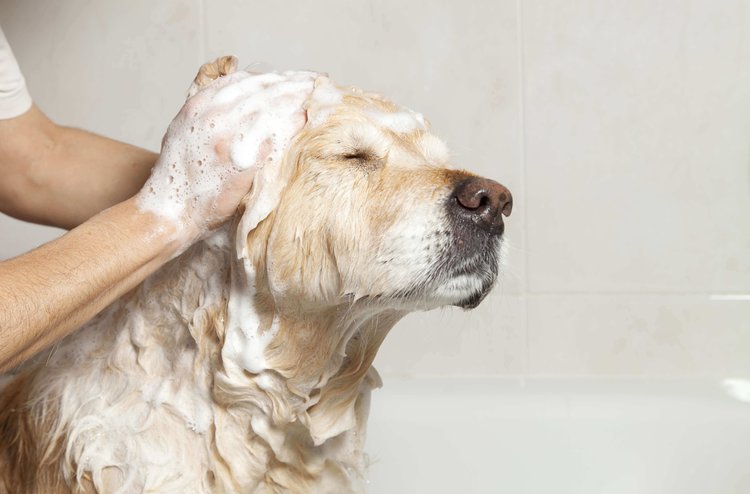
Nail Trimming: A Crucial Skill for Grooming a Dog at Home
Trimming your dog’s nails is often the most feared part of grooming, but it’s essential for their comfort and health. Overly long nails can cause pain, make walking difficult, and lead to paw problems.
-
Get the Right Tools: Use sharp, good-quality nail clippers or grinders.
-
Locate the Quick: The “quick” is a blood vessel and nerve that runs inside the nail. It is often pink in white nails but difficult to see in dark nails. Only cut the nail tip, avoiding the quicken. If you cut a quick, it will bleed and hurt.
-
Start Slowly and Stay Calm: If your dog is nervous, do a few nails at a time over several days. Reward them with treats for calm behavior.
-
How to Clip: Hold your dog’s paw firmly but gently.
-
Identify where the quick ends are (or estimate if the nails are dark in color).
-
Clip off only the tip, a small piece at a time. It’s better to cut less than too much.
-
For dark nails, clip small bits until you see a small gray or black dot in the center of the cut nail – this is the beginning of the quick. Stop there.
-
-
Use Styptic Powder: Tips for grooming a dog at home recommend always keeping synthetic powder or cornstarch nearby in case of a nail trimming accident. If you accidentally cut the quick, one essential tip for grooming a dog at home is to apply powder firmly to the bleeding nail. This is until the bleeding stops.
-
Grinding (Optional): Tips for grooming a dog at home include using a nail grinder. This slowly files the nail down and is particularly effective for dogs that dislike clippers. Another helpful tip for grooming a dog at home is to use the grinder in short bursts to prevent heat buildup and discomfort.
-
Frequency: Tips for grooming a dog at home suggest trimming your dog’s nails every 2–4 weeks, depending on the rate of growth and how often they walk on rough surfaces. One of the key tips for grooming a dog at home is that you shouldn’t hear their nails clicking on the floor—this means it’s time for a trim.
Maintain your ears’ health and clarity with regular cleaning
Regular ear cleaning prevents infections, especially in dogs with floppy ears. This is a vital tip for grooming a dog at home.
-
Check Ears First: Look inside your dog’s ears. They should be light pink and free of any bad smells, discharge, or excessive wax. A LITTLE WAX IS REGULAR
-
Gather Supplies: You’ll need a dog-specific ear cleaner (never use rubbing alcohol or hydrogen peroxide) and cotton balls or gauze pads.
-
Apply cleaner: Hold your dog’s ear flap up and out. Squirt the ear cleaner directly into the ear canal, filling it up.
-
Massaging the Base: Gently massage the base of your dog’s ear for 20-30 seconds. You might hear a squishing sound – that’s the cleaner working.
-
Let Them Shake: Allow your dog to shake their head. This helps bring wax and dirt to the outer ear.
-
Wipe Clean: Use a cotton ball or gauze pad to gently wipe away any visible dirt, wax, or cleaner from the outer ear and visible parts of the ear canal. Do not push anything deep into the ear canal.
-
Repeat (If Needed): Repeat on the other ear. If one ear is significantly dirty, repeat the process for that ear.
-
When to See a Vet: If you notice excessive redness, swelling, a strong sour odor, or thick discharge, or if your dog shakes their head frequently or scratching their ears, consult your veterinarian. These are signs of a possible ear infection.
Dental Care: Brushing Your Dog’s Teeth
The importance of dental hygiene is just as great for dogs as it is for humans. Regular tooth brushing prevents plaque buildup, bad breath, gum disease, and other health problems. Dog grooming tips at home often overlook this aspect.
-
Get a Dog Toothpaste and Brush: Use only toothpaste specifically designed for dogs. It comes in flavors they enjoy (like chicken or peanut butter). Use a dog toothbrush, a finger brush, or even a piece of gauze wrapped around your finger.
-
Start slowly: Introduce brushing slowly. Let your dog lick toothpaste from your fingers first. Then, gently rub it on a few teeth.
-
Brushing Technique: Lift your dog’s lips. Gently brush the outer surfaces of their teeth and gums in small, circular motions. Focus on the back teeth, as these collect the most plaque.
-
Frequency: Brush your dog’s teeth daily or at least several times a week for the most effective results.
-
Dental Chews/Toys (Supplemental): While dental chews and toys can be helpful, they are not a substitute for regular brushing.
-
Professional Cleanings: Regular home care helps, but many dogs still need professional dental cleanings from a veterinarian, especially as they age.
Eye Care: Keeping Their Vision Clear
Regularly check your dog’s eyes. They should be clear and bright, with no excessive tearing, redness, or discharge.
-
Gentle Wiping: Use a damp, soft cloth or a special dog eye wipe to gently clean away any crust or discharge from the corners of their eyes. Always wipe away the away the eye.
-
Separate Cloth for Each Eye: Use a different part of the cloth or a new wipe for each eye to prevent infection spreading.
-
Trim Hair (if needed): For long-haired breeds trim any hair around the eyes that might poke into them or get into their eyes. Use blunt-nosed scissors and exercise extreme caution.
-
When to See a Vet: If you notice excessive tearing, redness, cloudiness, squinting, or a thick, colored discharge, see your veterinarian.
Checking for fleas and ticks
Make sure your dog is flea and tick free during grooming sessions.
-
Use a fine-tooth comb: A flea comb is good for finding fleas. Comb through your dog’s fur, especially around the neck, tail base, and inner thighs.
-
Look for “Flea Dirt”: If you see small black specks that look like dirt, wipe them on a damp paper towel. If the specks turn reddish-brown, it’s “flea dirt” (flea poop containing digested blood).
-
Check for Ticks: Look for small bumps on your dog’s skin, especially after being outdoors. Ticks often attach to warm, hidden areas, such as between the toes, in the ears, or under collars.
-
Remove Ticks Properly: If you find a tick, use tweezers or a tick removal tool. Grab the tick as close to the skin as possible and pull it straight up with steady pressure. Do not twist or squeeze the tick’s body.
-
Consult with Your Veterinarian: Discuss year-round flea and tick prevention with your veterinarian.
Common Mistakes to Avoid While Grooming Your Dog at Home
Grooming a dog at home means knowing what not to do at the same time.
-
Use Human Products: Never use human shampoo, conditioner, toothpaste, or cleaning wipes on your dog. Their skin and bodies are different from ours.
-
Forcing Your Dog: If your dog is scared or uncomfortable, forcing them will only make them hate grooming more. Take it slow, be patient, and use lots of rewards.
-
Cutting Too Much Nail: Cutting into the quick is painful and causes bleeding. Always cut small bits at a time.
-
Ignoring Tangles Before Bathing: Water tightens the mats, making them harder to remove. Always brush thoroughly first.
-
Not Rinsing Shampoo Properly: Leaving leftover shampoo can irritate the skin. Rinse, rinse, rinse!
-
Using Regular Scissors Near Eyes: Always use blunt-nosed safety scissors if trimming the hair around the eyes, or better yet, let a professional do it.
-
Not Having Styptic Powder Ready: This is safety essential for nail trimming.
-
Bathing Too Often: Unless a vet advises it for a skin condition, too frequent bathing can dry out your dog’s skin.
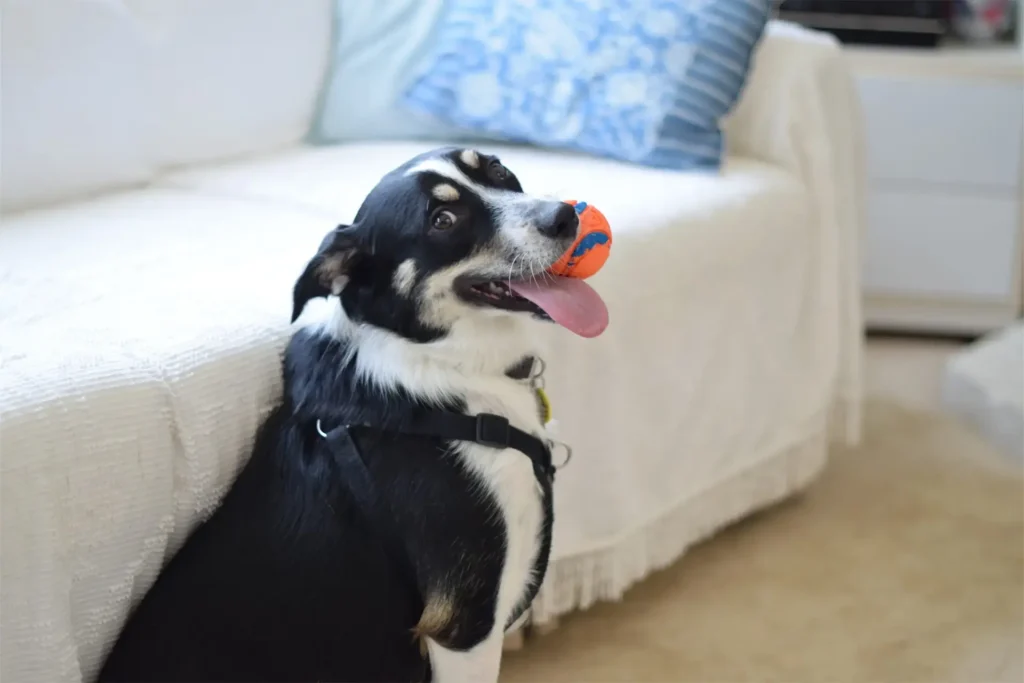
Making grooming a Positive Experience
The most essential tips for grooming a dog at home involve making it a good time for your dog.
-
Start Young: Introduce grooming tools and practices to puppies early on.
-
Short Sessions: Keep grooming sessions short, especially at first. Gradually increase the time as your dog gets used to it.
-
Lots of Rewards: Give treats and praise generously for calm behavior.
-
Calm and confident: Your dog can feel your mood. Stay calm and confident.
-
Gentle Touch: Always be gentle. If you hurt them, they will fear grooming.
-
Consistency: Regular grooming is essential for your dog’s well-being. This helps them get used to the routine.
-
Make it Fun: Sing, talk to them, or have a grooming partner distract them.
By following these strategies, grooming becomes less of a chore and more of a bonding activity.
When to Call a Professional Groomer or Vet
While there are many practical tips for grooming a dog at home, some situations require professional grooming or veterinary care. One of the most essential tips for caring for a dog at home is knowing when to leave it to the experts. For example, severe mats-especially when mats are tight and close to the skin—should be handled by a professional groomer to prevent injury. Another key tip for grooming a dog at home is recognizing behavioral issues; if your dog becomes aggressive, such as snapping or biting during the process, it’s imperative to seek help from a trained trainer or behaviorist. It’s also imperative to watch for skin problems, such as persistent redness, bald spots, flaky skin, lumps, or foul odors. These problems should be evaluated by a veterinarian. Ear infections, often indicated by discharge, foul smell, or frequent head shaking, also require veterinary attention. If your dog shows signs of limping or pain during grooming—especially during nail trimming—stop immediately and consult your vet. Lastly, complex haircuts or breed-specific hair styles need advanced skills and tools and are best left to experienced professionals. These are essential tips for grooming a dog at home to keep your pet safe and healthy.
Conclusion
Maintaining your dog’s hygiene and appearance is simple when you follow the right grooming tips for your dog at home. Grooming isn’t just about keeping your dog clean—it’s also an opportunity to check for hidden health issues, prevent painful mats or overgrown nails, and strengthen the bond between you and your pet. With essential tools like brushes, clippers, and gentle shampoos, along with proper techniques and plenty of patience, the most effective tips for cleaning a dog at home can turn what might feel like a chore into a rewarding routine. Positive reinforcement plays a key role in making each session enjoyable for your furry friend. When done regularly, these grooming tips for dogs at home will help home will help your dog feel comfortable, confident, and happy—ready to enjoy every adventure by your side.
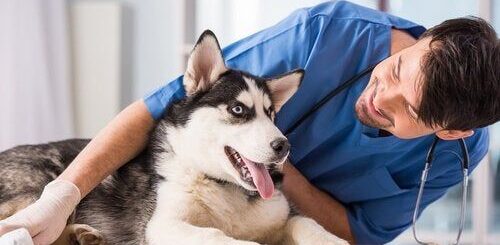

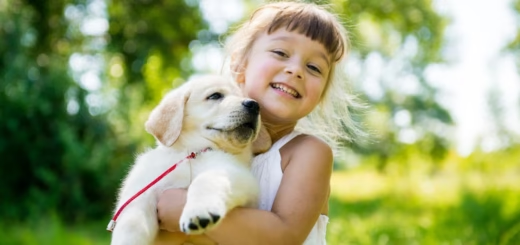
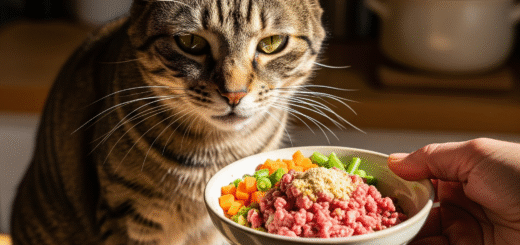

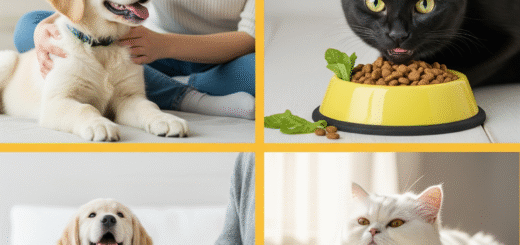
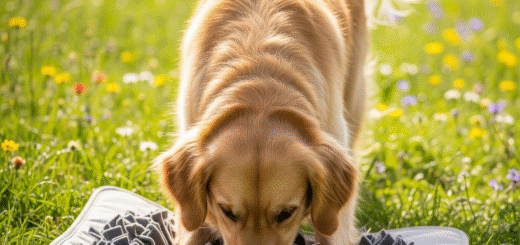









Recent Comments